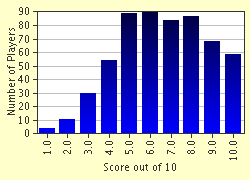Quiz Answer Key and Fun Facts
1. Which of these terms refers to a variety of wonderful Japanese rice seasonings that come in a variety of interesting flavors?
2. 'Gyoza' is the Japanese term, borrowed from the Chinese 'jiaozi', that refers to which of these lovely side dishes?
3. Miso soup is served with almost every Japanese meal. There are three main categories of miso with which fans of the soup should be aware. Which of the following is not one of them?
4. What is the generic term for the basic stock used by Japanese to flavor soups (much as bouillon is used in the West)?
5. A very important item in Japanese cooking is 'shôyu'. What do we call this substance, also popular in the West, in English?
6. Very popular in Japanese restaurants in the West, 'tempura' refers to a variety of vegetables and meats that are battered and fried. From which language did 'tempura' probably enter the Japanese language?
7. Oshinko is generally a vegetarian appetizer item that appears on many Japanese menus. It includes various vegetables, especially cabbage and radish, that have been pickled.
8. Which of the following items are you not likely to find on a menu in a sushi restaurant?
9. Agedofu and Yakko-tofu are two popular Japanese appetizers. Ironically, despite the names, tofu is an ingredient in neither of these dishes.
10. Soybeans are the main ingredients in both the fermented dish called 'natto' and the boiled dish 'edamame'.
Source: Author
thejazzkickazz
This quiz was reviewed by FunTrivia editor
ozzz2002 before going online.
Any errors found in FunTrivia content are routinely corrected through our feedback system.

